Introduction: Beyond the Pyramids of Giza
The best day trips from Cairo span 5,000 years of history. Ancient Egyptian pharaohs built monuments just south of modern Cairo. Greek and Roman rulers left their mark along the Mediterranean coast. Early Christian monks carved sanctuaries from living rock. Each destination offers unique experiences impossible to find elsewhere.
Egypt’s compact geography makes ambitious day trips surprisingly feasible. Modern highways connect Cairo to Alexandria in two hours. Desert roads lead to hidden oases and ancient ruins. Mediterranean breezes refresh travelers after scorching pyramid visits. Whether seeking archaeological wonders, natural beauty, or spiritual retreats, Cairo’s surroundings deliver unforgettable adventures.
Ancient Wonders Near Cairo
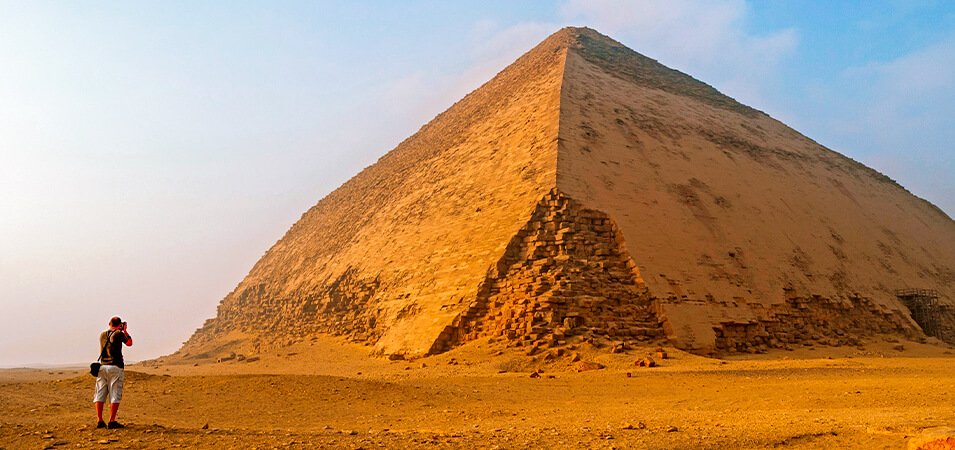
1. Dahshur Pyramids: Engineering Experiments of the Past
The Bent Pyramid stands as ancient Egypt’s most intriguing architectural mystery. Pharaoh Sneferu’s architects changed the pyramid’s angle mid-construction, creating its distinctive kinked profile. This engineering adjustment prevented catastrophic collapse, teaching lessons applied to later pyramid construction.
Dahshur offers pyramid experiences without Giza’s overwhelming crowds. The Red Pyramid allows visitors to descend into burial chambers via narrow passages. Original limestone casing stones still cover sections of both pyramids. The desert setting provides authentic ancient Egyptian atmosphere.
- Must-see: The Bent Pyramid’s unique architectural angle change
- Adventure: Crawl through the Red Pyramid’s internal passages
- Photography: Best lighting occurs during early morning visits
- Combine with: Memphis ruins and Saqqara for a complete ancient day
2. Saqqara: The World’s Oldest Stone Monument
Step into humanity’s first monumental stone architecture at Saqqara. The Step Pyramid of Djoser revolutionized construction 4,700 years ago. Architect Imhotep stacked six mastabas to create this groundbreaking design. The complex launched the pyramid age that defined ancient Egypt.
Recent archaeological discoveries continue revealing Saqqara’s secrets. The Serapeum contains massive granite sarcophagi for sacred Apis bulls. Nobleman tombs showcase vivid wall paintings depicting daily life in ancient Egypt. Underground galleries stretch for miles beneath the desert surface.
- Historic first: World’s oldest major stone building still standing
- New discoveries: Recently opened tombs with pristine decorations
- Underground marvel: Explore the mysterious Serapeum complex
- Pro tip: Hire a guide to access restricted tomb chambers
3. Memphis: Capital of Ancient Egypt
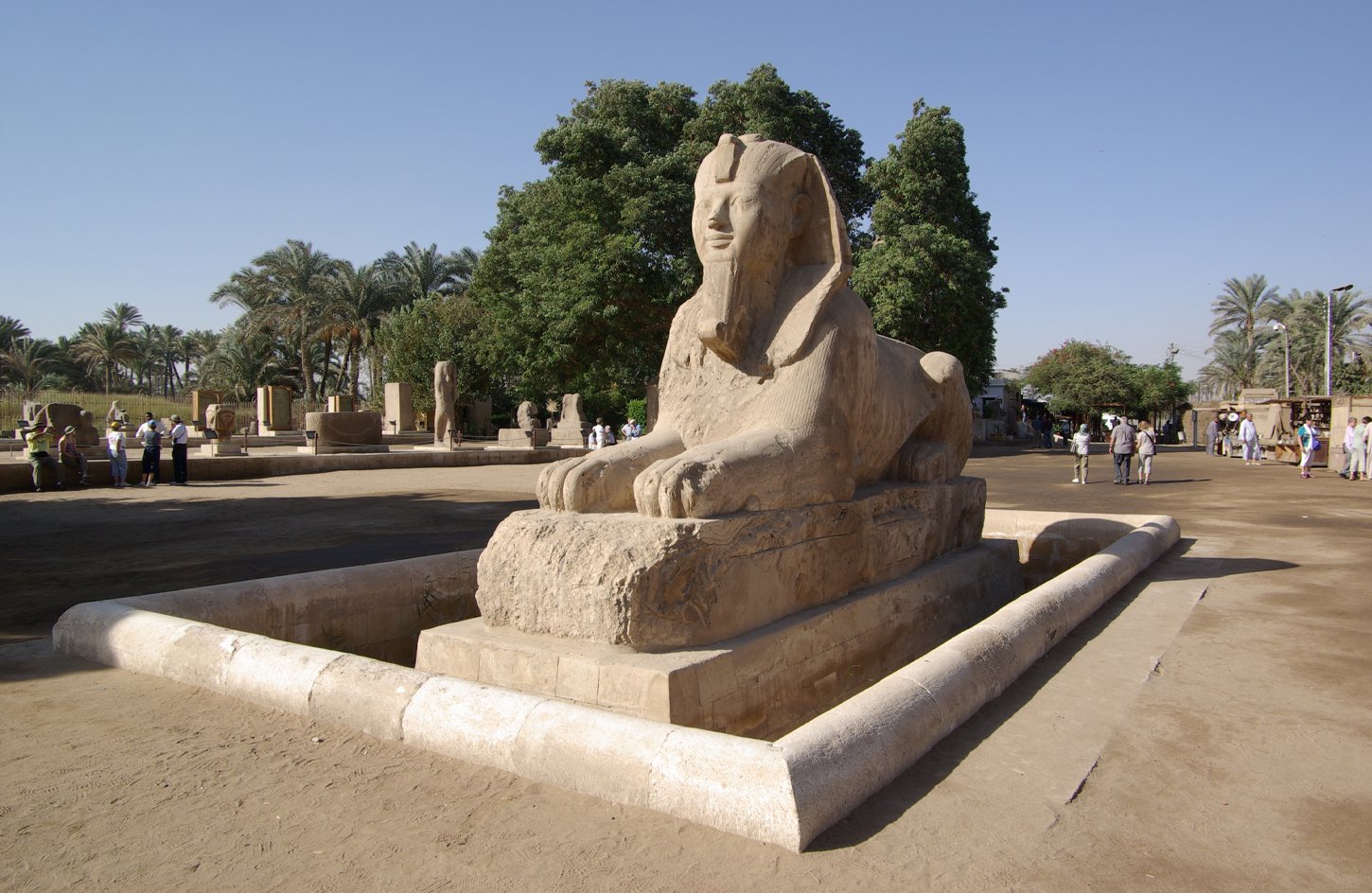
Memphis ruled as Egypt’s capital for over 3,000 years. This ancient metropolis controlled the vital junction between Upper and Lower Egypt. Pharaohs from multiple dynasties built palaces, temples, and monuments throughout the sprawling city.
The open-air museum preserves colossal statues and architectural fragments. A massive limestone statue of Ramesses II dominates the site. The alabaster sphinx weighs 80 tons and stands 4 meters high. These remnants hint at Memphis’s former grandeur.
- Colossal statue: Ramesses II’s limestone masterpiece lies horizontally
- Alabaster sphinx: One of Egypt’s most perfectly preserved sphinxes
- Historical significance: Capital city for 30+ dynasties of pharaohs
- Quick visit: Easily combined with Saqqara and Dahshur pyramids
Mediterranean Coastal Adventures
4. Alexandria: Pearl of the Mediterranean
Alexandria blends Egyptian, Greek, Roman, and Islamic heritage along beautiful Mediterranean shores. Founded by Alexander the Great in 331 BC, this cosmopolitan city became the ancient world’s greatest center of learning. The legendary Library of Alexandria attracted scholars from across the Mediterranean.
Modern Alexandria preserves remarkable archaeological treasures. The Catacombs of Kom El Shoqafa showcase unique Greco-Roman-Egyptian artistic fusion. Qaitbay Citadel stands on the ancient lighthouse’s foundation. The Bibliotheca Alexandrina revives the city’s scholarly traditions.
- Archaeological wonder: Kom El Shoqafa’s three-level underground cemetery
- Best photo spot: Qaitbay Citadel at golden hour with Mediterranean backdrop
- Modern marvel: Bibliotheca Alexandrina’s striking contemporary architecture
- Seafood lunch: Fresh catch at historic Fish Market restaurant
5. Catacombs of Kom El Shoqafa: Underground Masterpiece
These multi-level tombs represent the largest Roman burial site in Egypt. Greco-Roman-Egyptian fusion art decorates chambers carved from solid rock. The catacombs accommodate three religious traditions in harmonious artistic synthesis.
Descend through spiral staircases to reach burial chambers 35 meters underground. The main tomb features columns, statues, and relief carvings blending pharaonic and classical motifs. Central rotunda provides access to multiple burial halls through narrow passages.
- Hidden gem: Unique artistic fusion of three ancient cultures
- Underground adventure: Explore three levels of burial chambers
- Architectural marvel: Roman engineering meets Egyptian artistry
- Climate note: Naturally cool underground temperatures year-round
6. Qaitbay Citadel: Guardian of Alexandria’s Harbor
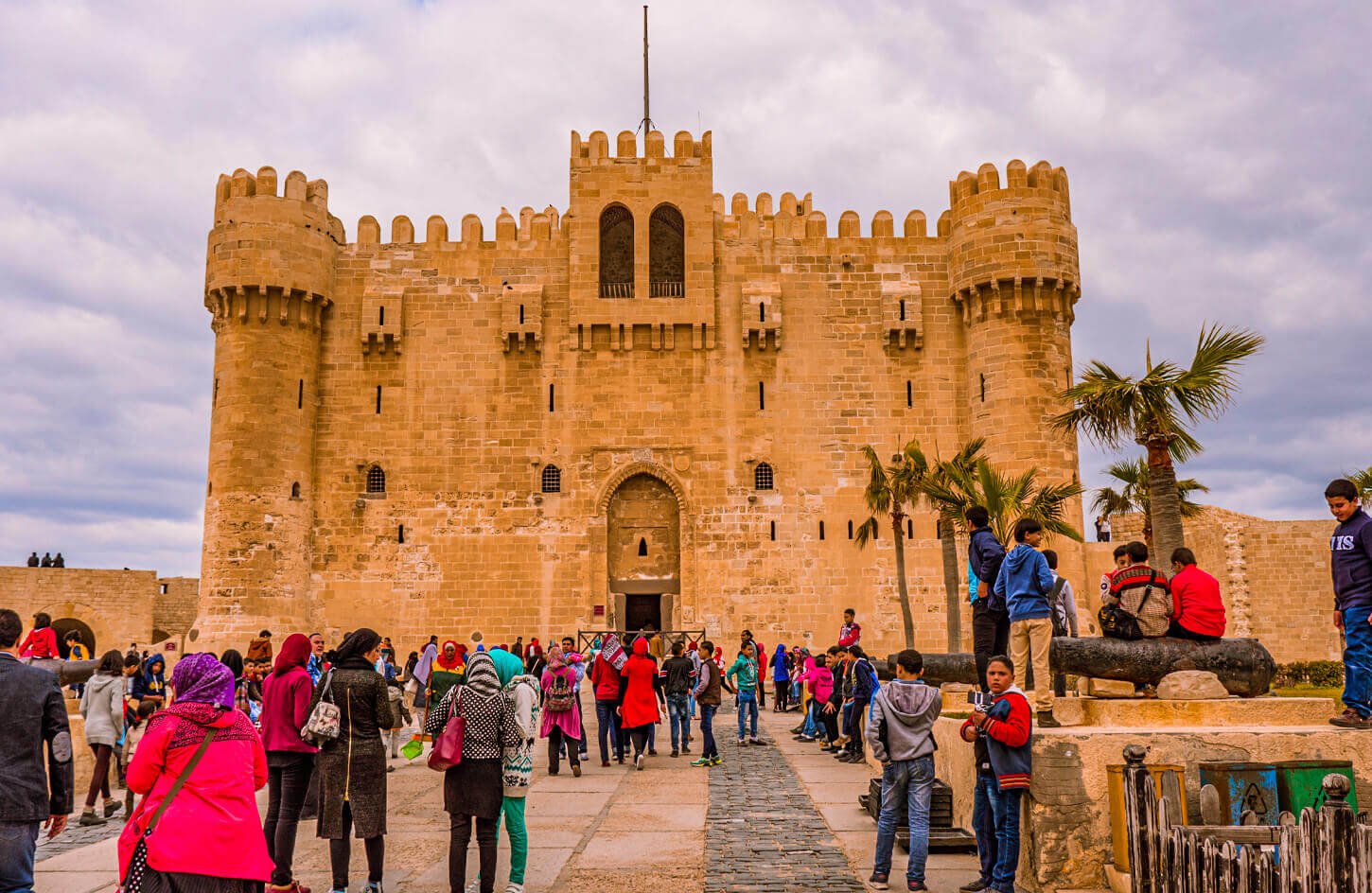
Built in 1477 AD, this fortress guards Alexandria’s eastern harbor. Sultan Qaitbay constructed the citadel using stones from the collapsed Lighthouse of Alexandria. The fortress protected Egypt’s northern coast from Ottoman naval attacks.
The citadel offers spectacular Mediterranean views from its ramparts. Three levels of fortifications demonstrate medieval military architecture. The central keep houses a naval museum displaying maritime artifacts. Waves crash against fortress walls during winter storms.
- Historic stones: Built from ancient lighthouse ruins
- Panoramic views: Mediterranean coastline stretches to the horizon
- Naval museum: Maritime artifacts from Egypt’s seafaring history
- Golden hour: Perfect lighting for photography before sunset
Desert Oases and Natural Wonders
7. Fayoum Oasis: Desert Mirage Turned Real
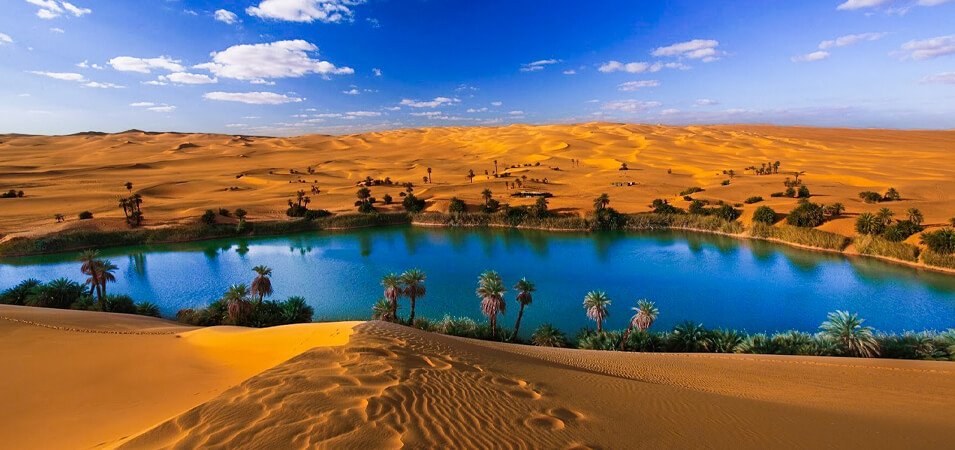
Just 90 minutes from Cairo, this lush depression hides waterfalls, fossils, and salt lakes. The Fayoum Oasis covers 1,700 square kilometers of fertile land fed by Nile irrigation channels. Ancient pharaohs hunted crocodiles and hippos in Fayoum’s marshes.
Magic Lake changes colors throughout the day due to mineral content. Wadi Al-Rayan features Egypt’s only natural waterfalls. Wadi Al-Hitan preserves 40-million-year-old whale fossils in UNESCO-protected desert landscapes.
- Must-do: Sandboarding down dunes at Magic Lake
- Natural wonder: Egypt’s only waterfalls at Wadi Al-Rayan
- Fossil hunting: Ancient whale bones at Wadi Al-Hitan
- Local eats: Fresh dates and pottery at Tunis Village
8. Wadi Al-Rayan: Egypt’s Hidden Waterfalls
Two connected lakes create Egypt’s most surprising natural spectacle. The Wadi Al-Rayan Protected Area encompasses desert, waterfalls, and diverse wildlife. Water cascades between upper and lower lakes through natural rock formations.
Desert springs feed the lakes year-round. The area supports over 15 mammal species and 100 bird species. Sand dunes surround the oasis, creating dramatic landscape contrasts. Bedouin camps offer traditional desert hospitality.
- Unique feature: Egypt’s only permanent natural waterfalls
- Wildlife watching: Flamingos, herons, and desert foxes
- Adventure activities: Sandboarding and desert safari options
- Pro tip: Visit during winter months for comfortable temperatures
9. Wadi Al-Hitan: Valley of the Whales
This UNESCO World Heritage site preserves the evolution of whales from land to sea mammals. Wadi Al-Hitan contains the world’s largest concentration of fossilized early whales. 40-million-year-old skeletons lie exposed in desert sand.
The outdoor museum showcases complete whale skeletons in their original positions. Interactive displays explain evolutionary processes and geological time scales. Desert landscapes provide stark backdrops for these ancient marine creatures.
- World heritage: UNESCO recognition for evolutionary significance
- Fossil trail: Walk among 40-million-year-old whale skeletons
- Educational: Learn about whale evolution from land to sea
- Combine with: Wadi Al-Rayan waterfalls for full desert experience
Spiritual and Cultural Retreats
10. Wadi El-Natrun: Spiritual Retreat in the Desert
Four ancient Coptic monasteries rise from the desert, preserving 1,600 years of Christian tradition. Wadi El-Natrun served as the birthplace of Christian monasticism. Early monks fled Roman persecution to establish desert communities.
Anba Bishoy Deir houses the preserved body of Saint Bishoy. Al-Surian Deir contains the finest collection of Coptic frescoes in Egypt. Al-Baramus and Abu Makar Deir maintain active monastic communities following ancient rules.
- Spiritual significance: Birthplace of Christian monasticism
- Unique find: Saint Bishoy’s naturally preserved remains
- Ancient art: 4th-century Coptic frescoes and manuscripts
- Dress code: Cover shoulders and knees for monastery visits
11. Ain Sokhna: Red Sea Relaxation
Egypt’s closest beach resort to Cairo offers Red Sea relaxation just 120 kilometers away. Ain Sokhna means “hot spring” in Arabic, referring to natural sulfur springs near the coast. Crystal-clear waters and coral reefs provide perfect swimming and snorkeling conditions.
Modern resort hotels line the pristine coastline. Water sports include jet skiing, parasailing, and deep-sea fishing. Desert mountains create dramatic backdrops for beachfront relaxation. The area offers year-round swimming in warm Red Sea waters.
- Beach paradise: Closest Red Sea access from Cairo
- Water activities: Snorkeling, diving, and water sports
- Natural springs: Therapeutic hot springs near the beach
- Resort luxury: High-end hotels with spa facilities
Hidden Archaeological Treasures
12. Tanis: The Lost City of Pharaohs
The ancient city of Tanis reveals treasures rivaling Tutankhamun’s tomb. French archaeologists discovered intact royal burials from the 21st and 22nd dynasties. Golden masks, jewelry, and ceremonial objects showcase pharaonic craftsmanship at its finest.
Tanis served as Egypt’s capital during the Third Intermediate Period. Massive temple ruins cover several square kilometers. The site remains largely unexcavated, promising future archaeological discoveries. Few tourists visit this remote Delta location.
- Hidden treasure: Royal tombs with golden burial masks
- Archaeological significance: Intact pharaonic burials recently discovered
- Massive ruins: Extensive temple complexes await exploration
- Off-beaten path: Remote location ensures crowd-free visits
13. Beni Hassan: Middle Kingdom Tomb Art
These Middle Kingdom tombs contain Egypt’s finest examples of daily life artwork. Noble governors decorated their eternal homes with hunting, fishing, and farming scenes. The tomb paintings provide invaluable insights into ancient Egyptian society.
Tomb of Khnumhotep II showcases the most complete Middle Kingdom decoration program. Over 200 individual scenes cover walls and ceilings. The artwork demonstrates advanced artistic techniques and vibrant color preservation.
- Artistic masterpiece: Most complete Middle Kingdom tomb decorations
- Daily life scenes: Hunting, fishing, and agricultural activities
- Color preservation: Vivid pigments surviving 4,000 years
- Historical insight: Glimpses into ancient Egyptian society
Natural Escapes and Adventure
14. Wadi Degla: Desert Hiking Adventure
Wadi Degla Protected Area offers hiking trails just 30 minutes from central Cairo. This geological wonder features limestone cliffs, fossil beds, and diverse desert wildlife. The wadi provides escape from urban congestion into pristine natural landscapes.
Hiking trails range from easy walks to challenging climbs. Rock formations contain marine fossils from ancient seas. Desert plants and animals thrive in this protected environment. The area serves as Cairo’s closest wilderness experience.
- Urban escape: Pristine desert just 30 minutes from Cairo
- Hiking trails: Multiple difficulty levels for all fitness levels
- Fossil discoveries: Marine fossils embedded in limestone cliffs
- Wildlife watching: Desert foxes, birds, and reptiles
15. Lake Qarun: Ancient Waters and Modern Recreation
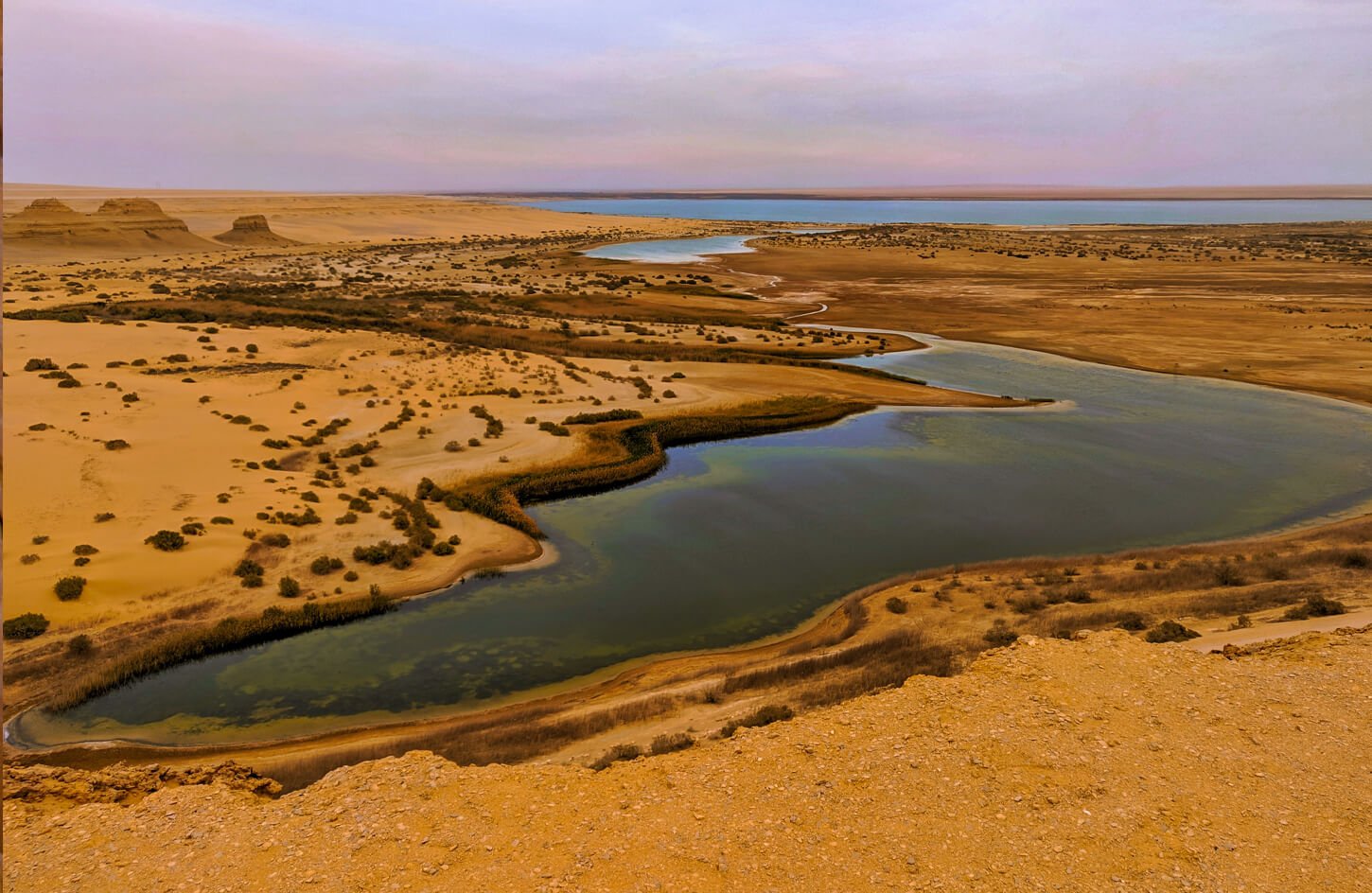
Egypt’s third-largest lake offers fishing, boating, and birdwatching opportunities. Lake Qarun has existed for over 70,000 years, making it one of the world’s oldest lakes. Ancient pharaohs hunted waterfowl in these same waters.
The lake supports important migratory bird populations. Over 100 species visit during seasonal migrations. Fishing boats harvest fresh fish sold in local markets. Lakeside restaurants serve traditional fish dishes with lake views.
- Ancient waters: One of the world’s oldest natural lakes
- Birdwatching paradise: Over 100 migratory and resident species
- Fresh fish: Traditional fishing boats supply local restaurants
- Scenic drives: Lakeside roads offer beautiful landscape photography
Conclusion: Your Egyptian Adventure Awaits
The best day trips from Cairo transform Egypt visits from pyramid-focused tours into comprehensive cultural adventures. Each destination reveals different aspects of Egypt’s rich heritage. Ancient pharaonic sites demonstrate architectural evolution. Medieval Islamic monuments showcase artistic achievement. Desert oases provide natural beauty and adventure opportunities.
Transportation improvements make previously remote sites accessible for day visits. Modern highways connect Cairo to Alexandria, Fayoum, and Red Sea destinations. Four-wheel drive vehicles reach desert monasteries and fossil sites. Professional guides enhance experiences with local knowledge and cultural insights.
Skip the hassle—book a private day trip with expert guides who unlock hidden stories and ensure comfortable transportation! Professional tour operators provide air-conditioned vehicles, entrance fees, and authentic local experiences. Transform your Egyptian adventure from ordinary sightseeing into extraordinary cultural immersion.
Egypt’s treasures extend far beyond Cairo’s famous pyramids. These 15 day trips showcase the country’s incredible diversity. Ancient wonders, natural beauty, spiritual retreats, and adventure opportunities await just hours from your hotel. Pack comfortable shoes, bring plenty of water, and prepare for unforgettable discoveries that will forever change your perspective on this remarkable land.
Check out our other articles:

